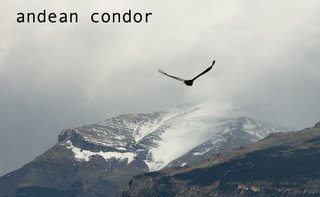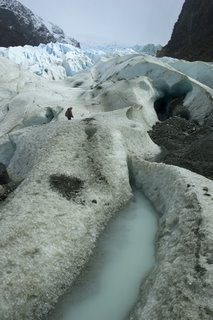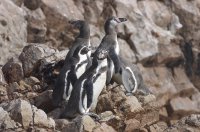The blue whale is the largest living creature, now and in known time. With a lenght up to 33 meter and a weight up to 150 tons it roams the oceans – outside human view most of the time. We know that when it calls it can reach thousands of miles an communicate over immense distances. In the era of whaling in the Southern Ocean, the blue whale was the benchmark and the unit used to measure the catch of other species (1 blue whale unit = x2 fin whales ex.).
There is a lot left to learn about the blue whale, it´s migration, feeding areas, total population – it´s considered a threatened species and is obviously a highlight when observed on a expedition cruise like we do.
It is extremely difficult to predict where to observe cetaceans and naturalists aboard expedition vessels have learned to speak in very vague terms when clients ask where and when they can expect their most wanted sightings.
BUT I KNOW ONE WHO KNOWS WHERE THE BLUE WHALE IS!

An interview with wildlife lecturer and responsible for all avian fauna aboard M/V Polar Star and cetacean enthusiast; Simon Cook;
Jørn Henriksen: Thank you for doing this interview. Simon, you say that you would rather call cetaceans for whales and dolphins?
Simon Cook: Yes, that is a much better term...
JH: Tell me simon, have you seen any large whales on the first six days of this cruise? You after all spent most of the daylight hours on the bridge.
SC: Yes, we saw several humpback whales coming into a port in Southern Peru – some really nice tail flukes as they were diving. And we saw two fin whales the day after, the second largest whale, they came swimming along the starboard side of the ship, only 20 meters off. We have also seen sperm whales, but on quite a distance. Coming out of the harbour Arica in Norhern Chile we encountered two blue whales.
JH: Two blue whales – wow! That must have been a pleasant surprise...
SC: Yes – and the funny thing is that we saw them on the exact same place as we saw them in 2003 and 2004, and almost on the same dates...
JH: Three years in a row, two blue whales, isn´t that quite extrordinary?
SC: There are some good feeding grounds for blues on this coast, and it seems as if this is one of them. I keep notes all bird, whale and dolphin observations I make – I had to mail my wife Mandy to have her look up in one of my older notebooks to confirm the position of the 2003 blue whale sighting – and yes, all three years sightings proved to be within 2 km of each other!
JH: Is it true that some taxonomists want to split the blue whale species into two?
SC: They want to split into ordinary blue whale and pygmy blue whale, but that would be a contradictory term because it would still be the larger than any other living creature...
JH: Can we expect to see more of these, largest living creatures on earth as we sail down the coast of Chile?
SC: Yes, ever since the mid nineties I have observed quite large consentrations of blue whales from Valdivia and south. On some occasions I have observed between 20 and 30 individuals at one time – more than I have heard of anywhere in the world. It is estimated that about 300 individuals are spread along the coast of Chile from Valdivia and south.
JH: That is quite something, why have not the rest of the world heard of this?
SC: It´s only the last few years that Chillean biologists have been out there and done proper countings, ”discovering” them.
JH: Isn´t it only in the few thousands, the estimated world population of blue whales?
SC: Yes – and a large proportion of them seem to be here!
JH: Now, I look forward coming further south and mabye see more blue whales! Another thing Simon; what is the most silly thing that happened today aboard Polar Star?
SC: That ”Missing”, the afternoon movie, went missing and we had to show something else instead...
Simon Cook rushes up to the bridge right after the interview – no time to loose, for many, there is nothing to see but an empty horizon, for Simon; an abundace of seabirds, from tiny petrels, dancing over the surface to giant albatrosses soaring effordlessly across the oceans. And the chance of something rare in the form of whales or dolphins, suddenly appearing from the deep.

Just minutes after we talked, Simon got to see RIGHT WHALE DOLPHINS on a close distance – for his second time in his life!
















